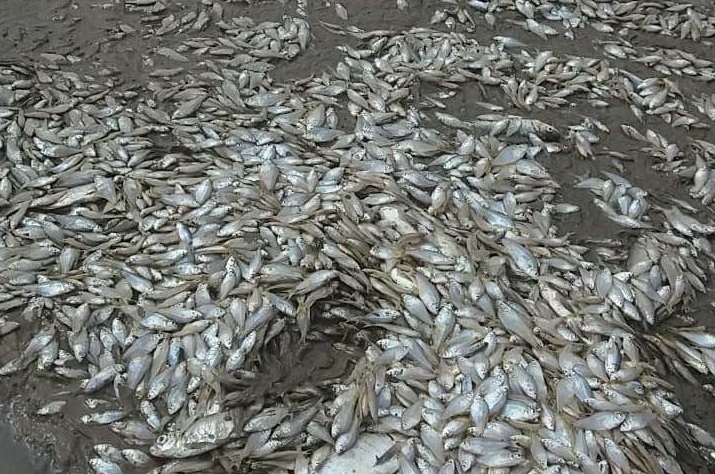INTERNAL INVESTIGATION OF THE UN REVEALS BREACH OF SOCIAL AND ENVIRONMENTAL GUIDELINES IN THE CASE OF BARRO BLANCO This article is available in Spanish here by Tracy Barnett and Jonathan Gonzalez Quiel / Intercontinental Cry
The Tabasará River, one of the largest in Panama and the source of life for the indigenous Ngäbe-Buglé people, was emptied to carry out maintenance work on the Barro Blanco Hydroelectric Dam last week, leaving thousands and thousands of the more than 30 varieties of fish and crustaceans to perish in the mud.
Ricardo Miranda, general coordinator of the 10 de Abril Movement representing the affected communities, standing in the mud and rubble just upstream of the dam, picked up a half-meter-long catfish, holding it up for the camera.
“I would like to take the opportunity to denounce the Generadora del Istmo SA (GENISA), the owner of the Barro Blanco Project,” he told a local cameraman who uploaded it to YouTube. “I also denounce the FMO Bank of the Netherlands and the DEG Bank of Germany, for financing a project like this, which has caused irreversible damage to the environment.”
Initial reports of the death of fish and photos that were sent last week from the Ngäbe community of Kiad were initially singled out as false, Miranda said in a telephone interview on Thursday.The Ministry of the Environment of Panama, MiAmbiente, sent personnel to investigate the death of fish on Sunday, May 13. The agency confirmed in a press release that there had been a fish die-off and that the company had reported the need to lower the water level for maintenance work.
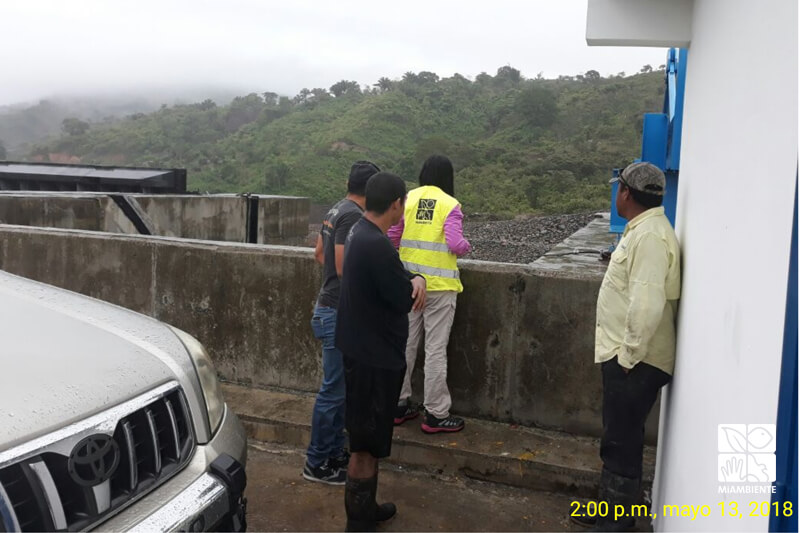
The inspectors of MiAmbiente see the devastation, apparently from the platform of the dam. (Ministry of the Environment)
Miranda, who grew up in the Tabasará River along with his family, now lives on the other side of the Ngäbe-Buglé district, but went to the river as soon as he heard the news. Upon arrival he found thousands of fish dying in the sun. Coyotes ate the dying fish and one person picked up some to carry. The river had been virtually emptied, leaving the riparian population exposed to a vast expanse of mud, according to Miranda, who observed only a few puddles of muddy water just above the dam.
MiAmbiente promised in its press release on Monday that “the surveillance of the site will be maintained in order to guarantee compliance with the regulations that apply to these events and that actions have been taken to guarantee the normal development of natural resources in the zone.”
Five Ngäbe-Buglé communities live along the river and have fought constantly against the dam since it was proposed for the first time. When the river flooded, it destroyed its food forest and the cocoa and coffee crops it depended on for sustenance. Thick mosquito clouds, previously unknown in the area, became common. Fishing became much more difficult, but it was still possible. Now, with the death of fish, they are left without a source of protein, said Miranda. In addition, the river, which also depend on water, is surrounded by 18 hectares of deep mud, and reaching the river to cross to the nearest town has become an almost impossible situation.
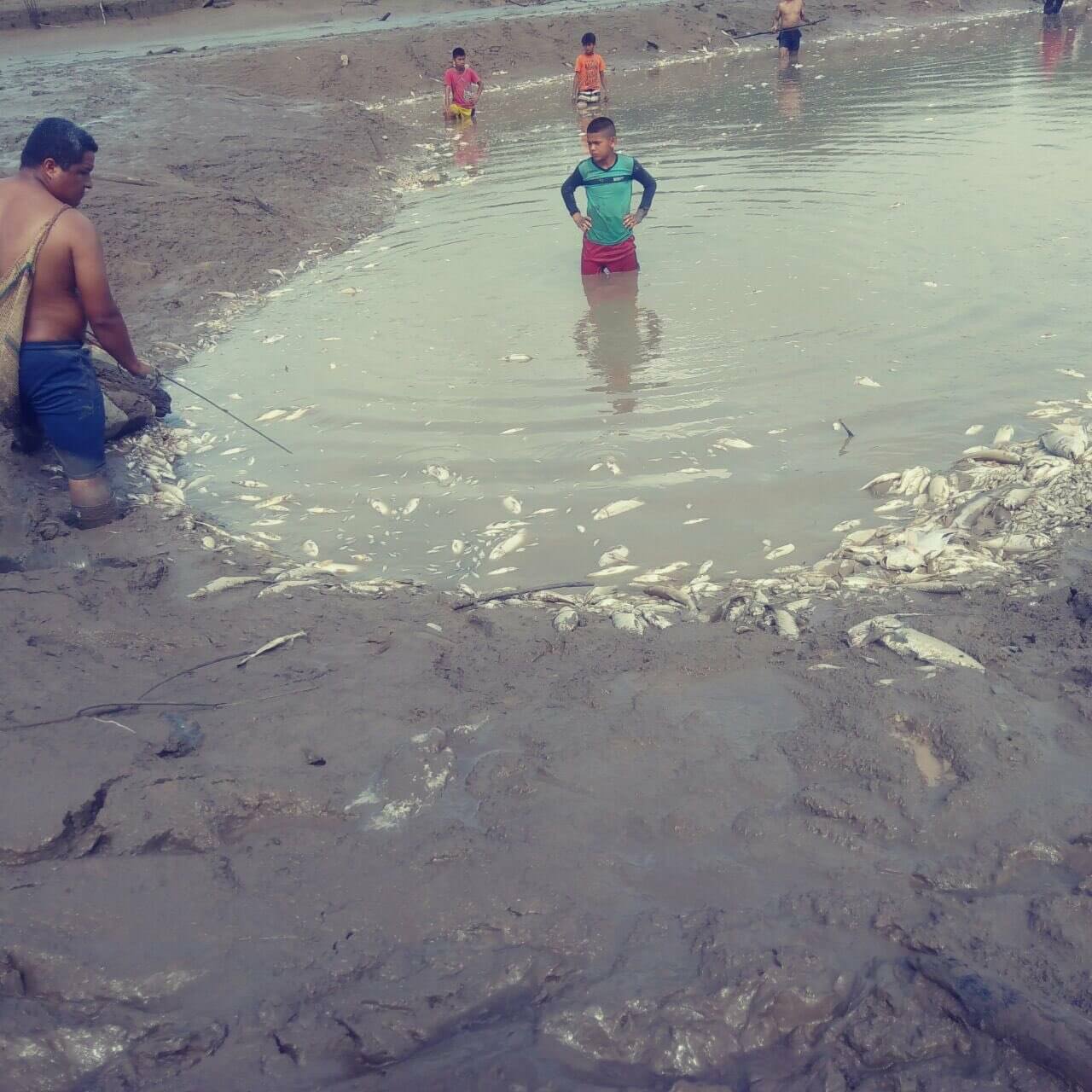
The residents of the Ngäbe community of Kiad observe the fish that die in the river in front of their homes. The access to the river has become a daily calvary for the community, which must cross it to leave their village. (Photo: Movement 10 April)
The government offered to pay the communities to relocate, but the Kiad community in particular has refused to accept - on the one hand for its principles, but on the other hand because the adjacent area and the community itself is a sacred site, which It houses several collections of prehistoric petroglyphs that have been the site of ceremonial meetings where the Ngäbe-Buglé people have traditionally connected with their ancestors.
“Obviously when you see this situation, you feel a very great impotence because all this is what we warned,” said Miranda, dismayed. “Then when we enter and see an ecological disaster at the mercy of the presence of the government and a company whose only interest is to profit, causing irreversible damage and death, both to animals and people, because here it is attempting against the feeding of the same inhabitants of the communities that live on this. "
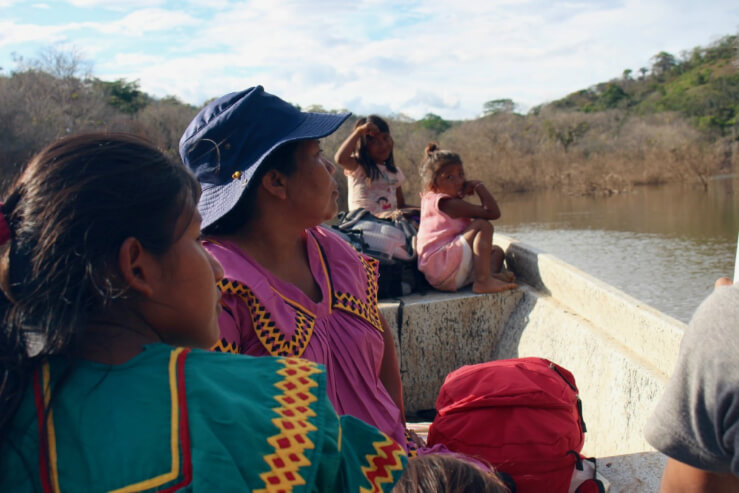
The Ngäbe leader, Weni Bagama, observes the damage to her community of Kiad and its surroundings by the floods caused by the Barro Blanco dam in February 2017. (Photo: Tracy L. Barnett)
The emptying of the river occurred in the final days of the public comment period for the draft report of the Environmental and Social Compliance Unit (SECU) established to monitor activities related to UNDP. The researchers concluded that UNDP violated its own protocols in the dialogue process that aimed to defuse the conflict surrounding the Barro Blanco dam. The projects (mainly a series of round tables held in 2015 and 2016 and a program to support reforms within the main government agency in charge of the Barro Blanco project) were financed at a cost of more than $ 66 million dollars.
The report was a response to the formal complaint filed on August 22, 2017 by the April 10 Movement, which represents the communities affected by the project. A final report will be issued when receiving and analyzing public comments.
Residents of the affected community of Kiad, one of the five indigenous communities of Ngäbe Buglé inundated by the dam, reviewed the report on their mobile phones from the muddy bank of their sacred Tabasará river. Since the floodgates were closed more than a year ago and destroyed the agricultural base of the community and many homes, residents have had great problems sustaining life.
“We have already read the report and, in general terms, we agree,” said one of the leaders of the April 10 Movement, Adelaida Miranda (Weni Bagama, by her name Ngäbe). “The report makes analysis completely on how the processes went, and investigated. That report is not only an office report but those people came to the area and did interviews, they saw the situation of the reservoir and then they issued that in the report. We are satisfied, of course this does not solve everything, but at least we agree where SECU admits that the United Nations did not fulfill the role it had to play. "
The results of the draft SECU report included the following:
• The UNDP Country Office in Panama did not apply the required environmental and social assessment procedures to the projects in question. • UNDP did not prepare a stakeholder analysis and participation plan before the roundtable, as required for UNDP commitments to Indigenous Peoples - commitments that present moderate (and probably significant) risks to communities. • UNDP did not comply with the due diligence, transparency, consultation / consent and rights of indigenous peoples requirements after the Roundtable Dialogue concluded around June 2015. UNDP, for example, did not ensure consistency with the warnings and conclusions of the UN Special Rapporteur. including warnings that inadequate consultation and consent processes were the source of most of the problems related to the respect and protection of indigenous rights, and the necessary measures to guarantee respect for those rights.
Dr. Donaldo Sousa, president of the Association for Environmental Rights in Panama City, said that the draft report seems to validate the demand presented by his association in 2016, against all those involved in the Barro Blanco hydroelectric project, including the company, government and non-government officials such as UNDP, which was the first and only criminal complaint against a hydroelectric dam project in Panama to date.
“This report clearly demonstrates that this complaint that we introduced was well founded and this project should have been suspended as a precautionary measure because of the damage it was going to cause, and they did not do so. The problem was that he had the support of international organizations as important as UNDP, it is logical that there is an element that has been decisive in this case; but corruption and impunity that exists in this case has also been decisive. And the economic interests that have been put forward once more, destroying the environment and above all impacting in a violent way the communities that live there. "
For Weni Bagama and her family, each day has become an odyssey, but they have no intention of giving up.
“We are still fighting,” said Bagama. “We ask the United Nations for an apology and we also ask the national authority to cancel that project, because right now we are walking around here seeing the disaster that has caused the emptying …. We have not waived the cancellation of that project. We are still fighting, because the fight is not over. "
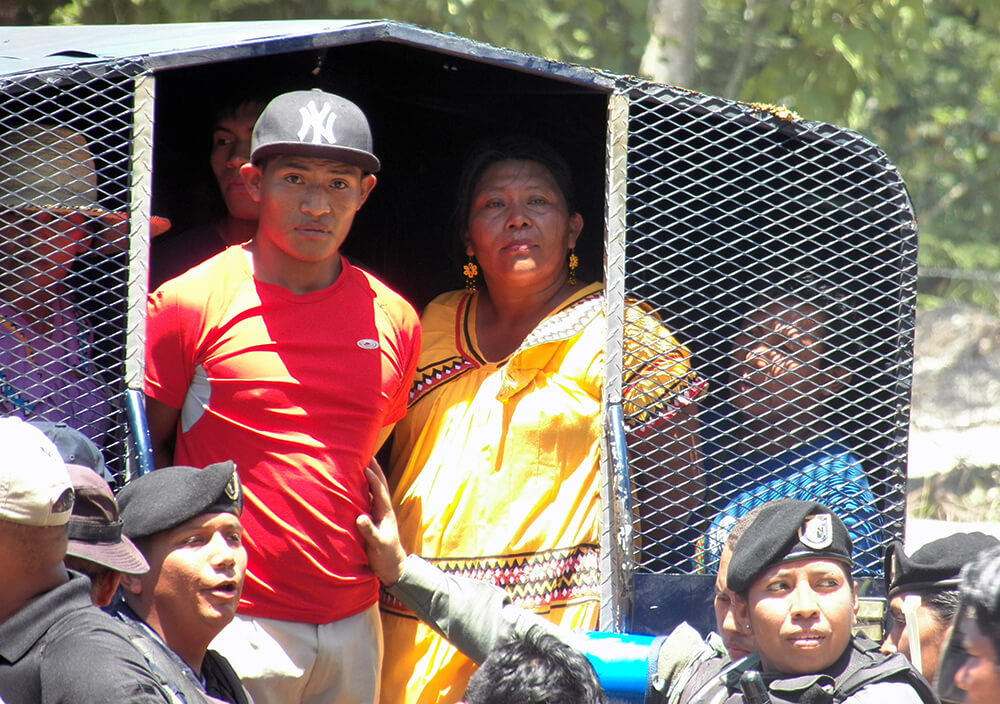
Ngäbe leader Weni Bagama (right) was among those arrested during protests at the Barro Blanco dam. (Photo: Oscar Sogandares)
